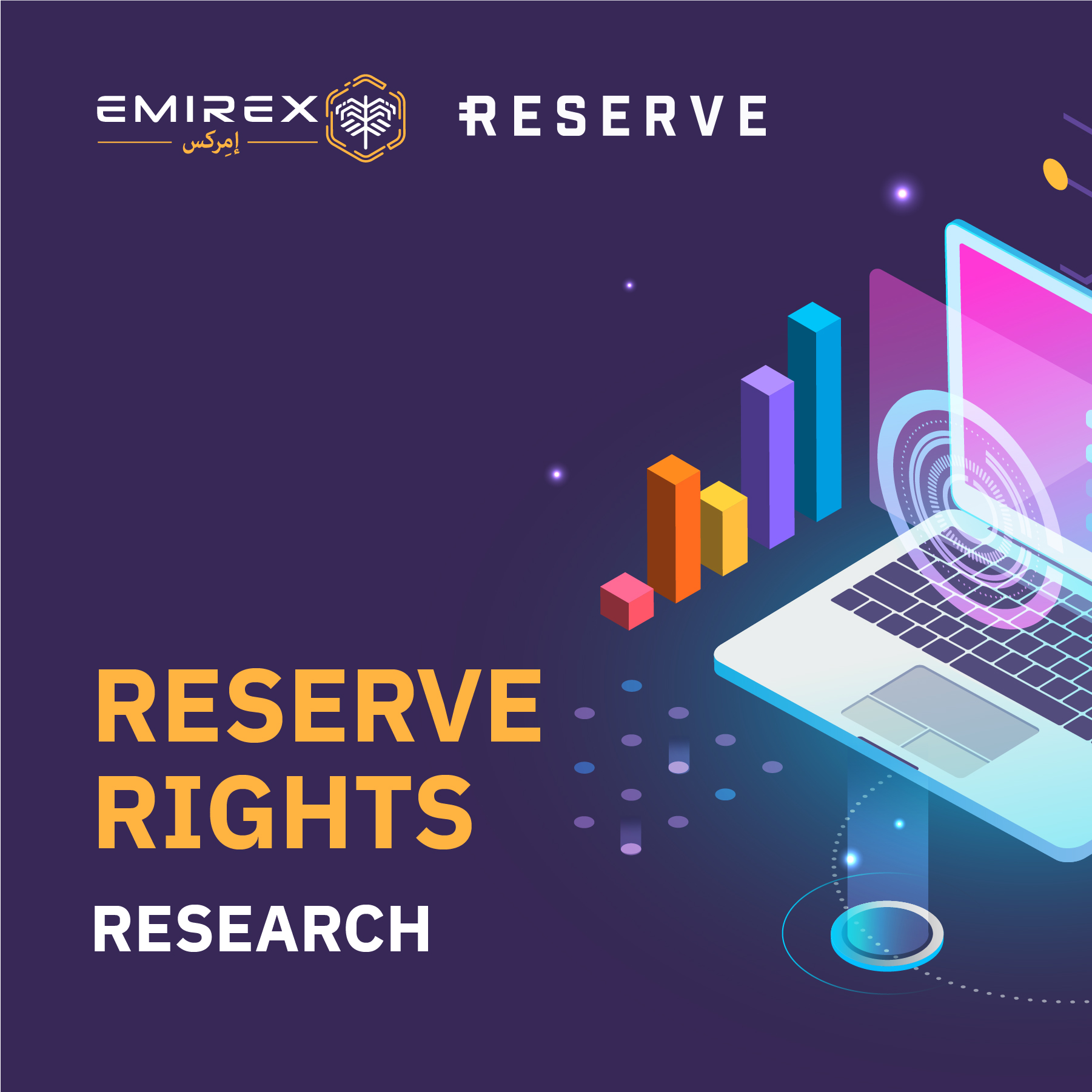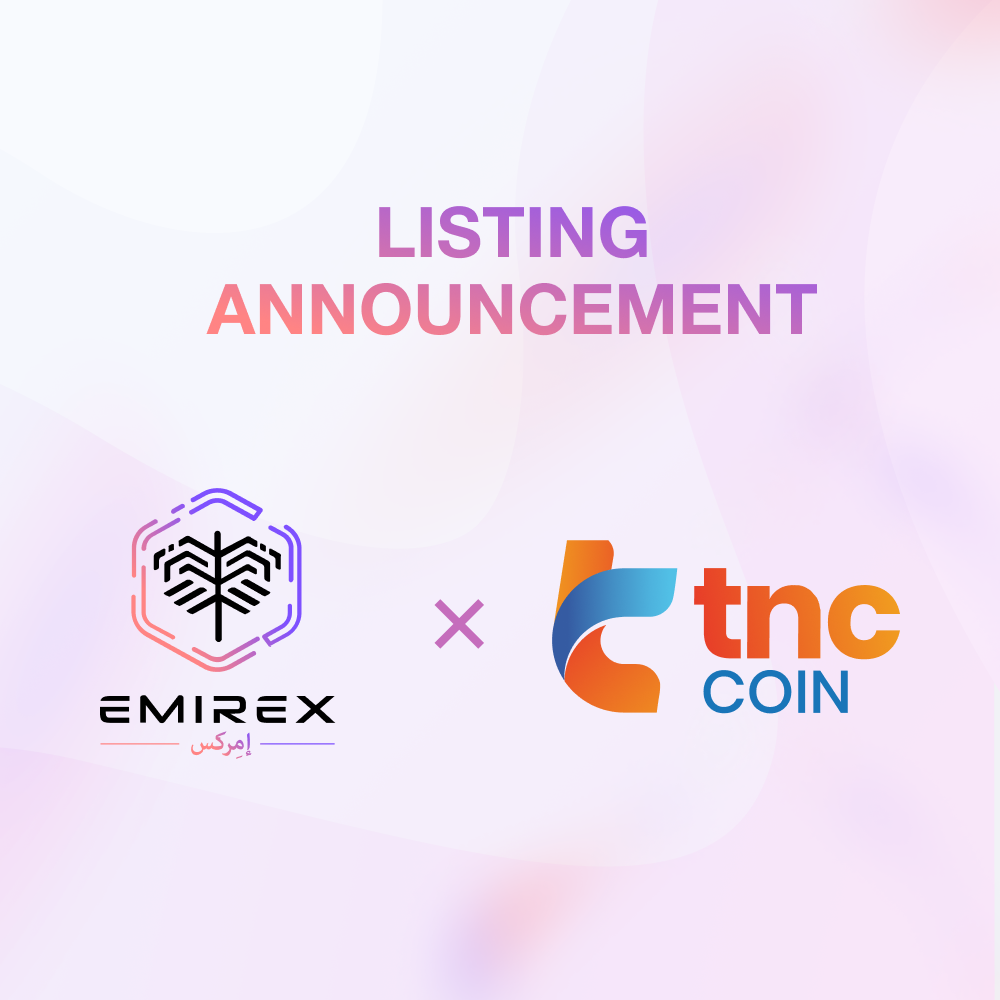On NN September, Emirex listed Reserve Rights (RSR) for trading on the Emirex exchange. Below is detailed information about the project’s current condition and perspective.
Current available trading pair on the Emirex exchange: RSR/USDT and RSR/BTC
- The Reserve Protocol comprises two tokens: the RSR utility token and the RSV stablecoin backed by a basket of assets as collateral.
- Reserve (RSV) is a flexible pool of stablecoins designed to reduce risk through diversification and decentralized governance.
- Reserve Rights (RSR) is the fluctuating protocol token that plays a role in stabilizing RSV and confers the cryptographic right to purchase excess Reserve tokens as the network grows.
- The Reserve Protocol can be implemented on top of any smart contract platform, or its chain.
CryptoCurrency Profile
- Token Standard - ERC-20
- RSR Price - $0,017184 USD
- RSR ROI - 375,54%
- Market Rank - #93
- Market Cap - $117,708,365 USD
- 24 Hour Volume - $57,371,485 USD
- Circulating Supply - 884,705,285 REN
- Total Supply - 999,999,633 REN
- All Time High - $0,031370 USD (Aug 31, 2020)
- All Time Low - $0,001247 USD (Mar 16, 2020)
About Project
Reserve aims to create a stable, decentralized stablecoin and digital payment system that scales supply with demand and supports 100% or more collateral backing. Its goal is to create a one-stop store of value, especially in regions with unreliable banking infrastructure and regions where hyperinflation is a problem.
The Reserve system will interact with three types of tokens:
- The Reserve token (RSV) — a stable cryptocurrency that can be held and spent the way we use US dollars and other stable fiat money;
- The Reserve Rights token (RSR) — a cryptocurrency used to facilitate the stability of the Reserve token;
- Collateral tokens — other assets that are held by the Reserve smart contract to back the value of the Reserve token, similar to when the US government used to back the US dollar with gold.
The protocol is designed to hold collateral tokens worth at least 100% of the value of all Reserve tokens. Many of the collateral tokens will be tokenized real-world assets such as tokenized bonds, property, and commodities. The portfolio will start relatively simple and diversify over time as more asset classes are tokenized.
Details on RSV & RSR
The reserve stablecoin (RSV) is a hyperinflationary asset that will initially be pegged 1:1 to the US dollar before being backed by a basket of blockchain assets held in the reserve vault at later stages. These assets will be diversified and will consist of real assets including securities, commodities, and currencies.
The purpose of conservation is to protect against systemic risks. In the long term, the team believes there will be 100 different low volatility assets supporting RSV.
The RSV is fully collateralized and the collateral is held in the reserve vault. A vault is a smart contract that contains a pool of blockchain assets that are used to back up a token. The Vault smart contract will collect RSV in two ways:
- Through fees. Each RSV transaction will be charged at a rate of 1%.
- Capital gains from assets backed by RSV.
RSV can be used to perform three main functions:
- Save savings from hyperinflation;
- Facilitate cheap value transfer between countries;
- Build a more robust trading ecosystem in developing countries.
If there is any mismatch between the RSR and RSV prices, then traders can exploit the difference through arbitrage and profit.
RSR is used to recapitalize the network ecosystem whenever the content of the protocol in the repository is depreciated. Besides, the token is expected to help re-calibrate the network. In this case, whenever there is an increase in the total supply of RSV, the RSR tokens in circulation should decrease. This is because only RSR holders are used for arbitrage opportunities.
Recent News
- 15 Aug 2020: The team announced building liquidity for RSV and RSR on crypto exchanges;
- Aug 2020: The partnership agreement with the Upbots: providing an easy way for RSR holders to perform arbitrage after the mainnet of the protocol;
- 25 Aug 2020: The Binance listing announcement;
- 8 Sep 2020: The first major Reserve app upgrade.
Roadmap
The release of the Reserve protocol is divided into three phases:
- Q3 2019: The centralized phase — where Reserve is backed by a small number of collateral tokens, each of which is a tokenized US dollar.
- 2020: The decentralized phase — where Reserve is backed by a changing basket of assets in a decentralized way, but still stabilized in price concerning the US dollar.
- Post-2020: The independent phase — where Reserve is no longer pegged to the US dollar, with the intent of stabilizing its real purchasing power regardless of fluctuations in the value of the dollar.
Perspective
The key moments defining the company’s further development:
- Notably, the project is backed by leading crypto funds, including Coinbase Ventures, as well as investors Peter Thiel and Sam Altman of YCombinator. Such an approach brings a great advantage to the project.
- The core team is made up of talent from renowned companies like Google, IBM, Tesla, Venmo, and OpenAI. They also have great connections to the world's largest businesses and universities.
- Given the fact that debt is increasing, fiat currencies are constantly depreciating around the world and the economic situation is strained, alternatives such as RSR are expected to be attractive to investors.
- When the project fully implements its plans, the circulation of RSR will depend on the amount and speed of RSV in the circulation. The more RSV in circulation, the more valuable the RSR will be.






